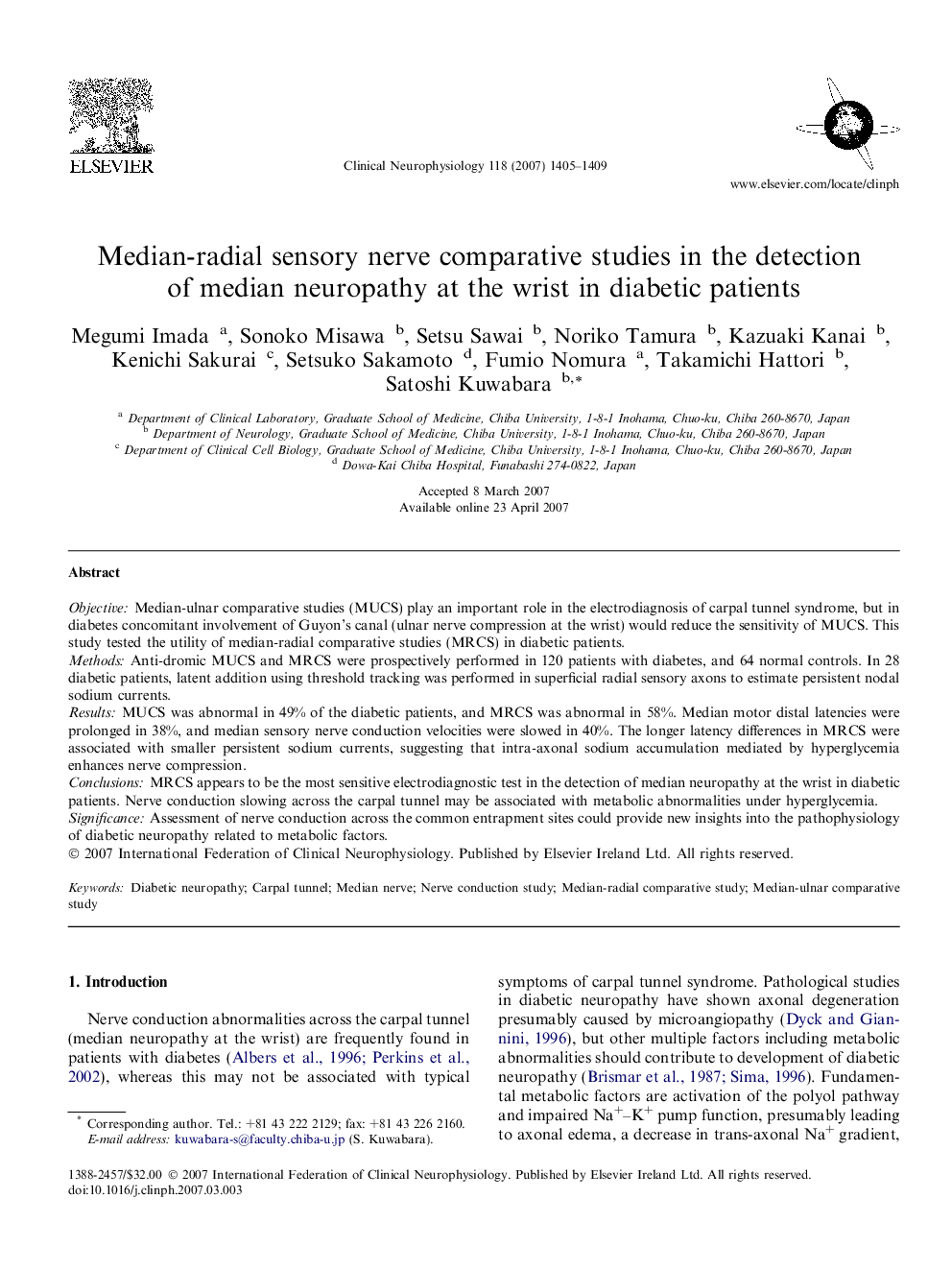| Article ID | Journal | Published Year | Pages | File Type |
|---|---|---|---|---|
| 3047716 | Clinical Neurophysiology | 2007 | 5 Pages |
ObjectiveMedian-ulnar comparative studies (MUCS) play an important role in the electrodiagnosis of carpal tunnel syndrome, but in diabetes concomitant involvement of Guyon’s canal (ulnar nerve compression at the wrist) would reduce the sensitivity of MUCS. This study tested the utility of median-radial comparative studies (MRCS) in diabetic patients.MethodsAnti-dromic MUCS and MRCS were prospectively performed in 120 patients with diabetes, and 64 normal controls. In 28 diabetic patients, latent addition using threshold tracking was performed in superficial radial sensory axons to estimate persistent nodal sodium currents.ResultsMUCS was abnormal in 49% of the diabetic patients, and MRCS was abnormal in 58%. Median motor distal latencies were prolonged in 38%, and median sensory nerve conduction velocities were slowed in 40%. The longer latency differences in MRCS were associated with smaller persistent sodium currents, suggesting that intra-axonal sodium accumulation mediated by hyperglycemia enhances nerve compression.ConclusionsMRCS appears to be the most sensitive electrodiagnostic test in the detection of median neuropathy at the wrist in diabetic patients. Nerve conduction slowing across the carpal tunnel may be associated with metabolic abnormalities under hyperglycemia.SignificanceAssessment of nerve conduction across the common entrapment sites could provide new insights into the pathophysiology of diabetic neuropathy related to metabolic factors.
